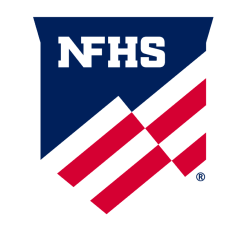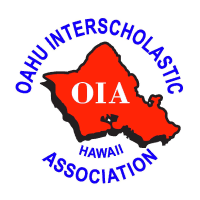INDIANAPOLIS, IN (July 13, 2021) — Two rules revisions involving the competitor’s uniform, along with procedural changes in several field events designed to reduce the risk of injury, highlight rules changes in high school track and field and cross country for the 2022 season.
These changes were among the rules revisions recommended by the National Federation of State High school Associations (NFHS) Track and Field and Cross Country Rules Committee and subsequently approved by the NFHS Board of Directors.
Similar to a number of other NFHS rules committees, the Track and Field and Cross Country Rules Committee altered its rules regarding head coverings worn for religious reasons.
Rule 4-3-1b(8) now states that ”head coverings worn for religious reasons are not considered hair devices; must not be made of abrasive, hard or unyielding materials; and must be secured to the body and/or uniform.” The change clarifies that there is no need for prior authorization from the state association for religious headwear.
The Track and Field and Cross Country Rules Committee is the eighth NFHS sports rules committee that has modified rules this year related to religious and cultural backgrounds. In addition to track and field, participants in volleyball, basketball, soccer, field hockey, spirit and softball will be permitted to wear religious headwear without prior approval from their respective state association. In swimming and diving, for religious reasons, competitors will be able to wear suits that provide full body coverage without obtaining prior state association authorization.
The other change in the track and field uniform concerns the uniform bottoms. Beginning next year, the manufacturer’s logo/trademark/reference on the uniform bottom may be larger than 2¼ square inches around the waistband.
“In track and field, uniform bottoms are increasingly being purchased by the athlete and not school-issued,” said Julie Cochran, NFHS director of sports and liaison to the Track and Field and Cross Country Rules Committee. “It is becoming more difficult to purchase some garments without the logo completely around the waistband. Since allowing larger logos around the waistband has no bearing or impact on the race or event, the committee determined the change would minimize issues related to logo/trademark/reference on uniform bottoms.”
Rule 6 concerning rules for field events has been completely re-organized to assist coaches, officials and participants in following the rules.
As a part of these revisions, the rules clarify that running in the direction other than how the event is conducted is prohibited during warmups, with the exception of the high jump. The articles more clearly organize warmups, competitions and conclusion of all field events with a focus on risk minimization.
“The NFHS Track and Field and Cross Country Rules Committee accomplished two years of work in one via Zoom this year,” said Cody Inglis, chair of the NFHS Track and Field and Cross Country Rules Committee and assistant director of the Michigan High School Athletic Association. “The committee was focused on enhancing the two great sports of track and field and cross country with the unique experiences that education-based athletics provides more than a million student-athletes around the country each year. This year, the focus of the committee was on building upon the foundation set by previous rules committees in continuing to enhance fair, safe competition that can be easily officiated. We are pleased that with the rewrite of Rule 6 that it will allow a rules book that can be more easily used by coaches, officials and others to make these great sports even better.”
One change was approved in Rule 8 related to cross country and another in Rule 9 regarding records. A note was added to Rule 8-1-1a stating that “a single wide line, if used on turns, should utilize other methods of markings (natural or artificial boundary markers, or signposts with large directional arrows) to assist the runner in identifying the course route.
“Since a single wide line may not be the shortest route, this change clarifies that other methods of marking a course should be used with a single wide line to help identify the turns and route of the course,” Cochran said.
A change in Rule 9-3-2 and other related rules clarifies when measurements for record attempts in the vertical jumps should be taken.
The final revision was approved in Rule 5-10-6 NOTE, which clarifies when each exchange zone is to be used.
A complete listing of the track and field and cross country rules changes will be available on the NFHS website at
www.nfhs.org. Click on “Activities & Sports” at the top of the home page and select “Track & Field/Cross Country.”
According to the most recent NFHS High School Athletics Participation Survey, outdoor track and field is the second-most popular sport for boys and the No. 1 sport for girls with 605,354 and 488,267 participants, respectively. Cross country ranks No. 6 for boys and girls with 269,295 and 219,345 participants, respectively. In addition, there are an additional 150,253 combined participants in indoor track and field.










